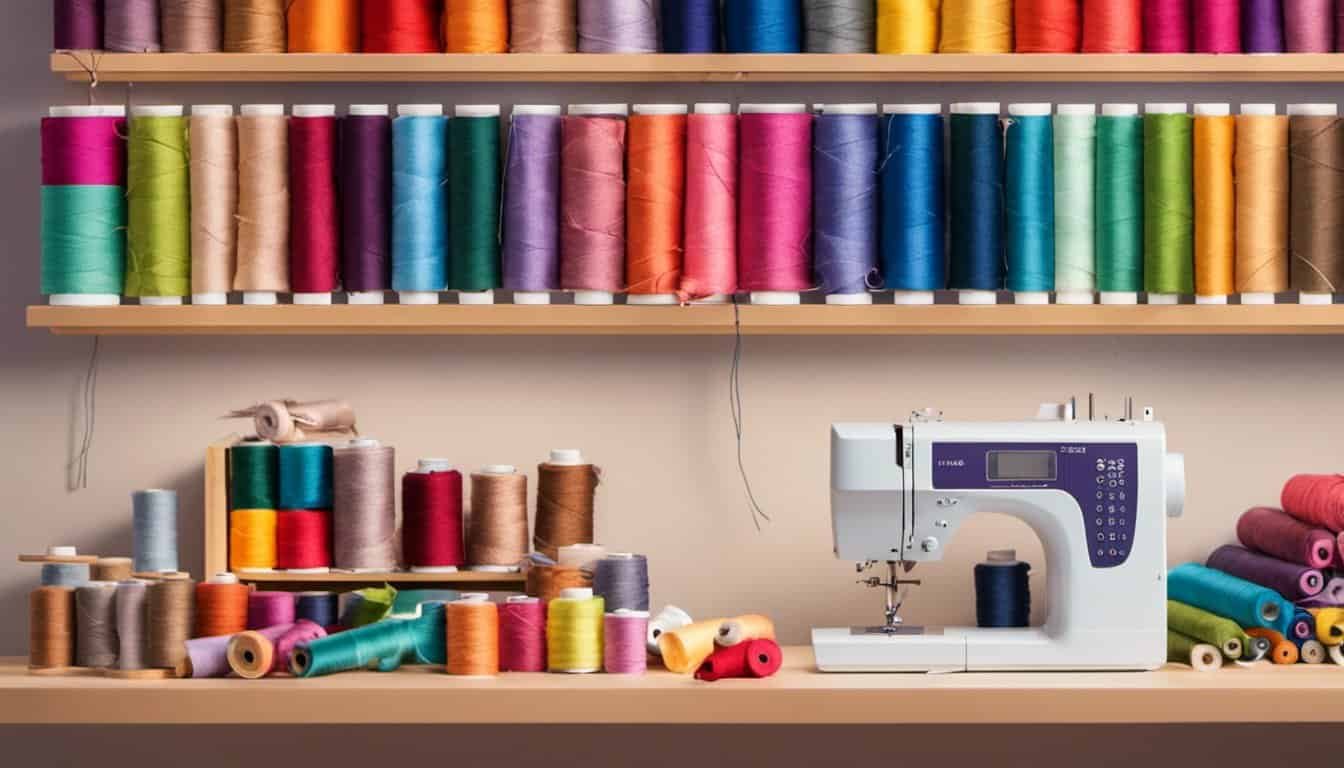Ever started a sewing project only to find your fabric shrinks after the first wash? You’re not alone. Pre-washing your fabric is a crucial step that many overlook, but it can save you from a lot of frustration down the line.
Understanding the Importance of Pre-Washing Fabrics
Pre-washing fabrics ensures your sewing project remains consistent in size and quality. It helps prevent post-sewing surprises.
Reasons to Wash Fabrics Before Sewing
Pre-washing fabric removes chemicals, dirt, and excess dye. Most fabrics (cotton, linen) contain sizing agents that make them stiffer. Washing removes this stiffness, ensuring smoother seams. If fabrics shrink after the first wash, your finished garment might not fit as intended. Washing beforehand accounts for up to 10% shrinkage, according to textile experts (source). Unwashed fabric can cause colors to bleed. If bleeding occurs during the first wash, it won’t ruin your final piece. Pre-washing prevents distortions in the finishing stages, keeping seams straight and patterns aligned.
Types of Fabrics and Their Pre-Wash Needs
Different fabrics have unique pre-wash requirements:
- Cotton: Wash in warm water. Use a moderate cycle and tumble dry. This mimics typical post-sewing laundry conditions.
- Linen: Wash in cold water to prevent excessive wrinkling. Air dry to maintain texture.
- Silk: Hand wash in cold water with mild detergent if fabric care permits. Always air dry.
- Wool: Use a wool-specific detergent. Wash in cold water on a gentle cycle and lay flat to dry to avoid felting.
- Synthetic Fabrics (Polyester, Nylon): Wash in warm water. Tumble dry on low heat to simulate real-use conditions.
Knowing the characteristics of fabrics and their pre-wash needs ensures your sewing experience is seamless and stress-free.
How to Pre-Wash Different Fabrics
Understanding the pre-wash requirements for various fabrics is essential to maintain their unique characteristics and ensure a successful sewing project. Here’s how to handle different types.
Pre-Washing Cotton, Linen, and Natural Fibers
Cotton: Machine wash cotton fabrics in warm water using a mild detergent. Tumble dry on medium heat, then iron to remove wrinkles.
Linen: Wash linen in lukewarm water with a gentle detergent. Air drying is preferable to avoid shrinkage. Iron while damp to eliminate creases.
Natural Fibers: Use cool water and a gentle detergent for other natural fibers like bamboo or hemp. Air dry these fabrics to maintain their natural texture and appearance.
Handling Synthetics and Delicate Materials
Synthetics: Wash synthetics like polyester, nylon, and acrylic using a gentle cycle with cold water and mild detergent. Air drying or low heat tumble drying is recommended to prevent damage.
Delicate Materials: For fabrics like silk or lace, hand wash in cold water with a gentle, pH-neutral detergent. Lay flat to dry to preserve their delicate nature.
Pre-washing these materials correctly preserves their quality and prepares them for a smoother sewing experience.
Addressing Common Pre-Washing Concerns
Pre-washing fabrics can seem daunting, but addressing common concerns helps ensure a stress-free sewing experience. Understanding how to deal with shrinkage, color bleeding, and best practices provides a solid foundation for your projects.
Dealing with Shrinkage and Color Bleeding
Shrinkage and color bleeding are typical issues when pre-washing fabrics. Cotton and linen may shrink up to 10% on the first wash. To prevent surprises, it’s essential to measure the fabric before and after washing. Note the change and adjust your sewing measurements accordingly. For instance, pre-washing a yard of cotton might result in losing a few inches.

Color bleeding occurs mostly in fabrics with vibrant colors or natural dyes. To test for bleeding, place a small fabric piece in hot water, then check if the water is tinted after soaking. If color bleeding occurs, wash similar fabrics together with a dye catcher sheet, which traps loose dyes. For example, wash red fabrics separately to prevent staining lighter fabrics.
Pre-Washing Best Practices and Tips
Following pre-washing best practices ensures your fabrics are ready for sewing. Use mild detergent without bleach to maintain fabric integrity. Harsh chemicals might deteriorate delicate fabrics like silk or wool.
Select appropriate water temperatures based on the fabric type. Hot water suits cotton and linen, while cool water is best for silk and wool. This preserves the fabric’s natural properties and prevents damage. For example, using hot water on wool can cause felting.
Air-drying fabrics on a flat surface or a drying rack reduces the risk of distortion and shrinkage. Tumble drying may cause uneven shrinkage in delicate fabrics. Lay out knits and woolens to maintain their shape, preventing them from stretching or becoming misshapen.
Iron fabrics after drying to smooth out any wrinkles before cutting and sewing. This ensures accurate measurements and better fitting pieces. For instance, ironing linen removes deep creases, making it easier to work with.
« Say Goodbye to Fabric Bunching: Expert Tips to Fix Common Sewing Problems Now
Unlock the Secret: Perfect Sewing Needle Sizes for Fleece Fabric Revealed »
By adhering to these pre-washing practices, you ensure fabrics behave as expected, resulting in professional and satisfying sewing projects.
Evaluating the Impact of Pre-Washing on Sewing Projects
Pre-washing significantly impacts your sewing projects by maintaining fabric consistency and ensuring a high-quality finished product.
How Pre-Washing Affects Fabric Quality and Sewing Ease
Pre-washing removes chemicals and impurities from the fabric, making it softer and easier to handle. Cotton and linen, for example, often come with sizing agents that can alter their texture. When these fabrics get pre-washed, these agents are removed, resulting in a more pliable material that’s easier to cut and sew. Shrinkage is another critical concern. Without pre-washing, cotton and wool may shrink after the first wash, distorting your final garment.
Pre-washing also tackles color bleeding. Newsprint and bright colors, like reds and blues, are prone to bleed during the first wash. Pre-washing these fabrics ensures that dyes set properly, preventing them from ruining your project later. Using a color catcher sheet while pre-washing can help identify and contain any potential dyes.
Case Studies: Before and After Pre-Washing
Here’s a closer look at the difference pre-washing makes through two real-life examples.

Example 1: Cotton Quilt
A quilter began her project using unwashed cotton fabric. After completing the quilt, she washed it and observed significant shrinkage, causing the edges to pucker and seams to distort. Having learned from this, she completed another quilt, pre-washing the fabric this time. Post-wash, the fabric showed no noticeable shrinkage, resulting in a smooth and durable finish.
Example 2: Red Silk Dress
A dressmaker used vibrant red silk to create a dress without pre-washing. Once finished, the dress was laundered, causing the red dye to bleed, affecting the adjoining fabrics. In a subsequent project with similar vibrant colors, the dressmaker pre-washed the fabric using a color-safe detergent. Post-launder, the fabric maintained its original brightness without any noticeable color bleed, saving the dress.
Implementing pre-washing into your sewing routine ensures fabric stability and quality, making your sewing projects more straightforward and reliable.
Conclusion
Pre-washing your fabric is a game-changer for any sewing project. By taking this simple step, you’re setting yourself up for success and ensuring your creations turn out just as you envisioned. You’ll find that your fabric is easier to work with and your finished products will have a professional touch. Plus, you’ll avoid the disappointment of shrinkage or color bleeding after all your hard work. So next time you’re ready to start a new project, remember to give your fabric a quick wash first. Your future self will thank you!


















